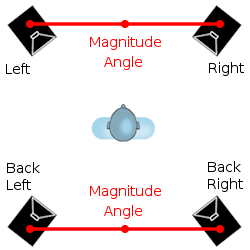The recording stage is the first stage after
composition and is when an artist’s song is first introduced to the studio. At
this point the artist should have a clear idea of what each piece of
instrumentation will be doing in the music. This is the chance to experiment
with these ideas now that it is possible to listen back to their artwork. This
production stage should result in all of the instrumentation being recorded and
structured to the artist and sound engineer’s satisfaction; no new
instrumentation is normally added after this stage.
So what does the recording stage involve? The
recording stage involves the capturing of the artists music via microphone or
direct input to the mixing desk. Different sound engineers will utilise
different methods while recording and it is important to note that there are no
set rules to the production of music, it is completely subjective. Although the
creation of music is a subjective thing, recording techniques and methods have
been devised specifically for the capturing of sound in stereo and 5.1 Surround
Sound and these methods differ between the two reproduction systems.
The invention of the stereo system of course saw to
the invention of stereo recording techniques. Stereo recording techniques
normally involve two microphones spaced or angled in a specific way towards the
sound source. The signal from these microphones is then sent to the mixing desk
where they are panned to the corresponding left or right speaker e.g. left
microphone panned to left speaker, right microphone panned to right speaker. Stereo
microphone techniques create the impression of space and the directionality of
sound sources; this is due to inter-aural time differences and inter-aural
intensity differences, the same way that human hearing localises sound. It is
important to note that during stereo recording not all techniques use two
microphones such as, close micing, which is where one microphone is place close
to the sound source and then recorded and panned appropriately.
All Stereo techniques can be applied in the
recording stage of 5.1 Surround sound music production, however panning methods
can differ as there are extra centre and rear channels. Similarly to the stereo
reproduction system, 5.1 surround sound has it’s own microphone techniques,
some of which were adapted from stereo techniques. Surround microphone
techniques can utilise anything from two to six microphones again with specific
spacing’s or angles.
